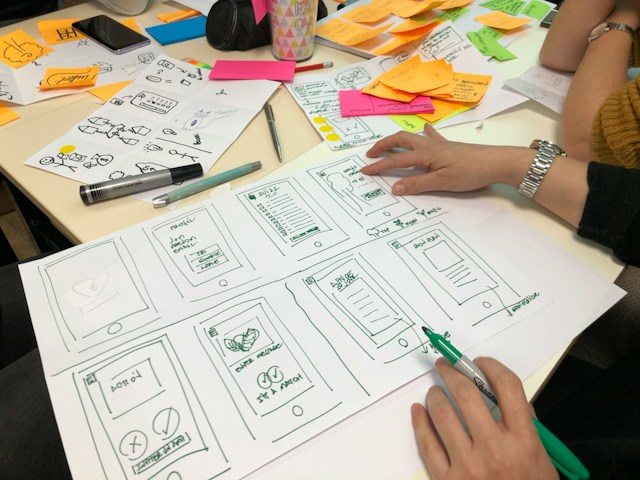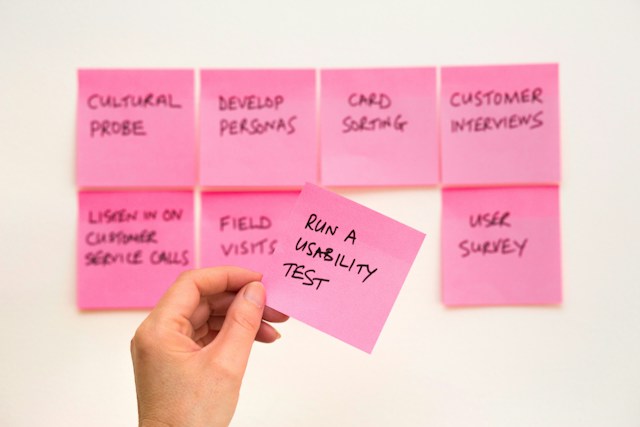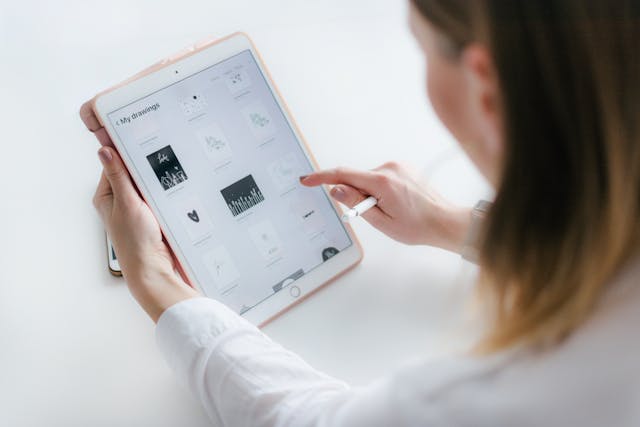The world of UX design is constantly evolving. Due to the ever-changing nature of the field, UX research has never been more crucial. UX researchers have an immeasurably important influence on the design decisions that shape a practical, enjoyable user experience. By gathering insights into users’ motivations, needs, and preferences, a UX researcher is the driving force behind effective digital products. When it comes to how to become a UX researcher, you must ask yourself one question. Do you possess a strong understanding of user behavior, psychology, and social sciences, as well as human-computer interaction? If so, a career as a UX researcher will be perfect for you!
Within our actionable guide, you will understand the importance of your dream role. Additionally, you’ll learn how to kickstart your career in the UX field!

What Is UX Research?
User experience (UX) research is an investigative process whereby the UX researcher will target end-users of a digital product.
The investigation aims to contextualize the needs and preferences of users when they interact with a product.
In UX research, these insights reveal design flaws in a product, which illuminates potential design opportunities.
What Is a UX Researcher?
To determine if this is the right profession for you, you must ask: what is a UX researcher?
A UX researcher designs an easy-to-follow website that provides the user with an experience that is intuitive and engaging.
Ultimately, a UX researcher will employ a range of research methods to gain insight into the users of a product.
What Does a UX Researcher Do?
So, what does a UX researcher do?
A user experience researcher reveals user behaviors, needs, and problems to make products/services more enjoyable for the user. However, beyond that, their research must culminate into a resolution for a user’s problem.
The Duties of a UX Researcher
With that in mind, here are the typical duties of a UX researcher:
- You will work alongside other researchers and stakeholders to understand the purpose of your research.
- You will clarify questions your research aims to answer.
- You will employ appropriate research methods to collect valuable insights and data about your target audience.
- You will recruit targeted end-users for specific research studies.
- You will develop budgets and deadlines for research projects.
- You will conduct research studies and analyze the data collected.
- You will transform your findings into actionable recommendations for UX designers to aid them in the design process.
- You will present your data to the larger product teams and stakeholders for review.
Research Methodologies
Deciding which research method to use is an imperative part of being a UX researcher.
Below, we shall guide you through the various means of research so that your investigations have the user in mind.
Qualitative
Qualitative user research helps you collect user-centric data through the direct observation and study of participants.
Qualitative data can reveal the motivations, thoughts, and attitudes of your users.
This form of research is vital to uncovering the reason why users perform certain actions.
Quantitative
Quantitative data acquires numerical data, identifies patterns, and makes predictions about a target audience or topic.
Quantitative research can help you determine the best-performing variation of a designer’s product. It also answers when, where, and what users actually do/expect.
Behavioral
Behavioral research is when you directly observe a user and their actions when interacting with a product.
Behavioral data reveals how users actually use a product, which can help designers create an effective, intuitive first-time user experience.
Attitudinal
Attitudinal research focuses on a user’s opinions and attitudes towards a product.
Analyzing attitudinal data will uncover users’ needs, motivations, and expectations. This ensures a designer’s product meets the users’ needs.
Evaluative
Evaluative research tests the overall useability of a product. Evaluative data can illuminate potential areas of improvement for a designer’s product.
This form of research allows you to test your solutions to ensure they meet a user’s needs through feedback.
Generative
Generative research helps researchers develop an understanding of users to identify innovative opportunities.
In order to find innovative opportunities, you must define the users’ problem, which requires you to know how people live.
By conducting generative research, you will contextualize users’ environments, behaviors, opinions, and perceptions.
Types of Research Methods a UX Researcher Utilizes
1. User Interviews
A user interview is typically a one-to-one session with a single participant and generally lasts between 30-60 minutes. During this interview, you will ask questions about a particular subject to understand a participant’s attitudes, preferences, desires, and experiences.
When conducting a user interview, you must have a clear objective in mind, only asking questions that benefit your research.
You should examine verbal/non-verbal cues, ask follow-up questions, and avoid rushing/interrupting the participant. Ultimately, you’ll learn how the participant feels about an experience and then apply it to the product you’re designing.
Research Method: Qualitative, Generative.
2. Field Studies
Field studies classify as research activities that the participants complete within their own contexts. By observing participants in their natural environment, you can see how they organize their environment to support their tasks.
With techniques like flexible user testing or ethnographic research, you can understand how environmental factors may affect the users’ experience.
The goal of field studies is to contextualize end-users, comparing what they actually do to what they say they do.
Research Method: Qualitative, Behavioral.
3. Diary Studies
Diary studies require participants to make a record of their thoughts, feelings, experiences, and activities over a given time period.
UX researchers use this self-reported record to understand the behavioral habits and patterns of their participants.
With long-term diary studies, you can also reveal the user’s journey with your product and the context of use.
Research Method: Qualitative, Evaluative.
4. Surveys
A survey is a set of questions you use to collect data from your target users.
User researchers employ surveys to understand a user’s behavior.
You can determine which of your product’s qualities work and what doesn’t. Of course, this is incredibly useful when making improvements to your product’s design.
Research Methods: Qualitative, Quantitative, Attitudinal, Generative, Evaluative.
5. Focus Groups
Focus groups collect data via group interaction.
UX researchers will recruit a small number of carefully selected participants and monitor their discussion of a particular topic.
Your objectives should be explorative and diagnostic – you need to identify the users’ problems and resolve them.
Focus groups explore how, why, and what participants think while providing the stimuli of other participants’ opinions and interactions.
Research Methods: Qualitative, Generative.
6. Card Sorting
In a card sort, participants organize information into different categories in an easily understandable way.
Users receive a series of labeled cards/virtual cards, which is useful when it comes to information architecture.
With card sort data, you can refine the navigational structure of your website.
UX researchers use card sorting to understand how users see grouped content on a website.
Research Method: Qualitative, Generative, Attitudinal.

7. Tree Testing
Tree testing is a means of evaluating a potential site structure.
With tree testing, you ask users to find items based on how they expect to navigate through a website’s organization.
In 15-20 minutes, you can ascertain a menu structure’s effectiveness without worrying about the layout and design.
Research Method: Quantitative, Behavioral, Evaluative.
8. Five-Second Testing
Five-second testing is a form of user testing that will help you evaluate users’ first impressions of your design.
A user researcher will show participants an image of a landing page for five seconds. In order to complete this test effectively, you must then ask follow-up questions about what the participants saw.
From this test, you can determine if your user interface effectively portrays the primary message to the audience.
Research Method: Attitudinal, Evaluative.
9. A/B Testing
A/B testing refers to an experiment where users evaluate two variants of a design.
The purpose of this test is to reveal which product variation performs better when used by a real user.
You can then analyze this data to determine your users’ preferences quantifiably.
Research Method: Quantitative, Evaluative.
10. Concept Testing
Product concept testing evaluates and maximizes the appeal and potential success of a new product idea.
To validate your concept, you must put the user at the center of the ideation process. This will help you determine your audience’s interest and the probability of their purchase.
Research Method: Qualitative, Generative.
11. Usability Testing
Usability testing determines how easy a design is to use amongst a group of users.
You can conduct usability testing via formal, live testing, remote testing, or guerrilla testing.
Through usability testing, you can find design flaws that you might’ve otherwise overlooked. By moderating how participants behave when interacting with your products, you’ll learn how well your product works.
Research Methods: Qualitative, Behavioral, Evaluative.
How To Become a UX Researcher: UX Researcher Skills
In order to become a proficient UX researcher, you must demonstrate valuable skills.
We’ve assembled an overview of the essential UX researcher skills that will ease the process of crafting successful product concepts.
Note: Technical skills are sets of abilities/knowledge used to perform specific, practical tasks. Soft skills are non-technical skills that complement hard skills in the workplace and help with interactions, problem-solving, and task management.
Technical Skills
- You must understand how to design intuitive user interfaces.
- You must know how to analyze data.
- You must be able to generate insights from data.
- You must know how to interpret statistics.
- You must understand how to conduct various UX research methods.
- You must know how to use research software tools.
- You must know how to create user personas.
- You must know how to produce user journey maps.
- You must know how to create prototypes and wireframes.
- You must know how to conduct user testing.
Soft Skills
- Empathy.
- Interpersonal communication skills.
- Sound writing skills.
- Problem-solving skills.
- Critical-thinking skills.
- Cooperative skills.

UX Researcher Salary
An essential facet of any profession is its profitability, regardless of which career stage you are currently at.
Fortunately, you can expect a UX researcher’s salary to be well-paid.
Here is an overview of the average salaries of UX researchers at different stages of their careers.
1. Entry-Level (0-2 Years of Experience)
The average salary of an entry-level UX researcher is $60,000 per year.
It is worth noting that this may change depending on your company’s location and size.
2. Mid-Level (2-5 Years of Experience)
The average salary of a mid-level UX researcher is $78,000 per year.
It is worth noting that this may change depending on your company’s location and size.
3. Experienced (5-10 Years of Experience)
The average salary of an experienced UX researcher is $96,000 per year.
It is worth noting that this may change depending on your company’s location and size.
How To Become a UX Researcher With No Experience
Read our list below to discover how to become a UX researcher with no experience:
- Complete an Introduction to UX Research course.
- Learn as much as you can via blogs, podcasts, YouTube videos, and books.
- Pursue higher education. This may include a degree in behavioral science or a UX research boot camp.
- Develop essential technical and soft skills.
- Familiarize yourself with crucial UX research tools.
- Acquire practical experience by participating in sample/freelance projects.
- Make connections with professionals in the industry.
UX Researcher Portfolio
Your UX researcher portfolio should adopt the typical structure and content that your employers are familiar with.
You should include a short bio that introduces yourself, your processes, and any relevant work experience.
You should include ways to contact you. Social media accounts like LinkedIn are best for portfolios as they showcase your professional persona.
Then, you must demonstrate case studies, projects, and/or supplemental artifacts that emphasize your hard work. Choose 4-5 projects that highlight your proficient use of technical/soft skills.
Finally, you should include feedback and references from former clients to show how you can meet and exceed users’ expectations.
Entry-Level UX Researcher Jobs
Now you know the ins and outs of the UX research process! Finally, it is time to find entry-level UX researcher jobs.
Starting a User-Centric UX Research Career
The UX research process is of fundamental importance to the creation of digital products.
Beyond the hands-on experience and technical prowess you need to succeed, your research should put users’ needs first.
So, now that you know how to become a UX researcher, it’s time to create the latest digital product trend!
If you’re looking for designs that sport exceptional UX research, why not learn from proven products?
Page Flows is a helpful resource for finding interaction design ideas. Get started today to access our growing library of user flow recordings and finally stay up-to-date with current design trends.





